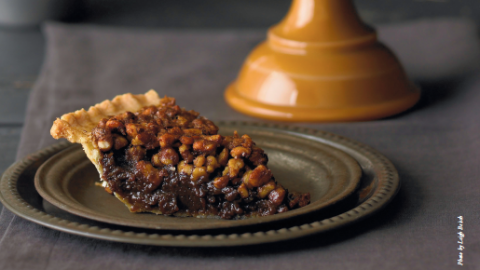Nuts 101: Black Walnuts
Discovery
In early fall, a black walnut tree begins to drop its nuts. Hard green balls, nearly the size of a tennis ball, plummet without warning on those who happen to be standing below. The fall, even on asphalt, does not bruise the walnut hull (clue #1). The semi-lethal projectiles lay scattered everywhere. Why doesn't anyone pick these things up? Black walnuts cost around $21 per pound, shelled. This is rock-hard gold just laying in people's yards.
I grew up in California where English walnuts are grown for the masses. We put a nice little bowl out for holidays along with a nutcracker and pick. We baked them into brownies. They came in a little bag from the grocery store or were sold, in the shell, in large bins. But in my new Southern home, there are walnuts all over the place and it annoys me to no end that no one is doing anything with them. I found a recipe for Black Walnut Soup. Recipe in hand, I set out to harvest me some nuts.
The first stop was to ask permission to pick some off the ground at a local garden. The garden manager laughed at me. It wasn't a polite snicker, but an all-out laugh. "Sure," he said. "Take all you want. They just clog the lawn mower."
Effort
Fine. He doesn't know what he's missing. Four minutes later I had my 100 nuts, about 30 pounds. With the help of well-meaning, (but also openly laughing) native Southerners and Google, I researched a few ways to remove the green hulls from the nuts. The first attempt was to run my car over them. It obliterated the nuts. I don't have a garage, so letting the hulls rot off over the winter was out. So with a double-layer of latex gloves and a sharp knife, I spent about four precious hours in our parking lot hulling the nuts.
You've been to Home Depot. You've seen "walnut" stain for furniture. Ever wonder where they get the term? If you're from here, of course you didn't wonder; you grew up knowing. They're not talking about the color of the tree trunk. They're talking about the color of the juice from the hull when it stains your hands, through two pairs of gloves. Go ahead, try bleach, lots of soap, and hot water. It's not going to make one whit of difference. The palms of my hands were stained for a month and every time I looked at them, I could still hear all those friends laughing.
More Effort
I took my slimy, hull-less nuts into the house and scrubbed them clean, wearing out a few more pairs of gloves and three scrubby sponges in the process. The black, ridged nuts, naked of their hulls, were now about the size of . . . well . . . a walnut. All the instructions were clear that the walnuts needed to cure. So I let them cure. They sat in a paper sack over the holidays.
What Now?
If you Google "black walnut cracker," your computer will laugh at you. You'll find plenty of nutcrackers available for purchase and many will bear the warning "don't even think of using this implement on a black walnut." Black walnut shells are hard, so hard that the broken shells from commercial operations are used to clean jet engines. My thought was that people have been harvesting these nuts forever, so there's probably no need for a special cracker. Surely a hammer will do.
With my sack of walnuts, an old kitchen towel, a hammer, and nut pick, I set out to finally harvest my precious nuts. Wrap the nut in the towel, give it a good wallop and you're left with a cracked shell – and lovely black walnut dust. Well, maybe a little coarser than dust, but certainly not the gorgeous halves you get from an English walnut. I patiently picked out the nutmeats and placed them in a bowl, discarded the shell fragments, and reached for another nut to crack. An hour later I had a healthy half cup of walnut pieces and a kitchen towel cut to shreds. I decided to save the other 80 nuts to shell at another time.
I'm sure that in the "olden" days, people had time during the winter to sit around and crack nuts. Or, perhaps it required a small army of children who did not have Twitter, Facebook, and video games to occupy their time, so it was easy to convince them that extracting the rich nutmeats was a good, creative use of their time.
Let's Do the Math
Four minutes to pick up the nuts; four hours to hull them; an hour trying to get my hands clean; four hours to crack and pick out the nuts and I still didn't have a brownie to show for it. Nine-plus hours for two cups of nuts – sure, that seems reasonable, doesn't it?
The black walnut is native to the U.S. and grows well all across North Carolina. Missouri is home to one of the largest black walnut processors in the country, Hammons, which harvests nuts from 15 states. I'm sure they've got the process figured out where I don't. Right before Christmas, I found black walnuts at the grocery for $2.99 for a half cup. At that rate, I figure I had saved myself a grand total of $11.96 by going through this arduous process. But you just can't put a dollar amount on the joy it gave my friends – who, by the way, are still laughing.
From Nutty to Nuttier
A year later, my 80 black walnuts are still sitting in the paper bag in my living room, just waiting for the right evening when I'm in the mood to smack something. Perhaps during a basketball game when the refs are making ridiculous calls? I bought some black walnuts at the grocery today to finally try that soup recipe. My husband gently reminded me of the walnuts that are still in the living room. I know my little experiments – and the laughter that accompanies them – bring him joy to offset the frustration.
I still can't stand the idea of all those nuts going to waste, so this year I tried a new tactic. A friend told me about nocino (green walnut liqueur). Nocino is made with black walnuts before the nut is formed, while they are still green. You harvest the nuts on St. John's day (June 24), then wash and quarter the green balls. Add some vodka and sugar. Some recipes call for a few spices – cloves, cinnamon, vanilla, maybe even a little lemon zest. Let it steep in a glass jar for a few months. Give it a shake now and then. Strain off the solids and you're left with an inky brown liqueur that is traditionally served cold and goes really well with rich, custardy desserts.
This year, my hands remain unstained. There are no shell shards littering my living room. And the liqueur is lovely to sip as you watch the rest of the black walnuts fall from the trees.
Resources – Hammons Nut Emporium
www.hammonsproducts.com • 1.888.429.6887
Black walnuts (around $10 per pound), oil, nutcrackers, baked goods, candies, and nutshell products (in case you need to sandblast something).
Melissa Petersen is the editor of Edible Memphis Magazine. She can be as stubborn as a black walnut shell.









